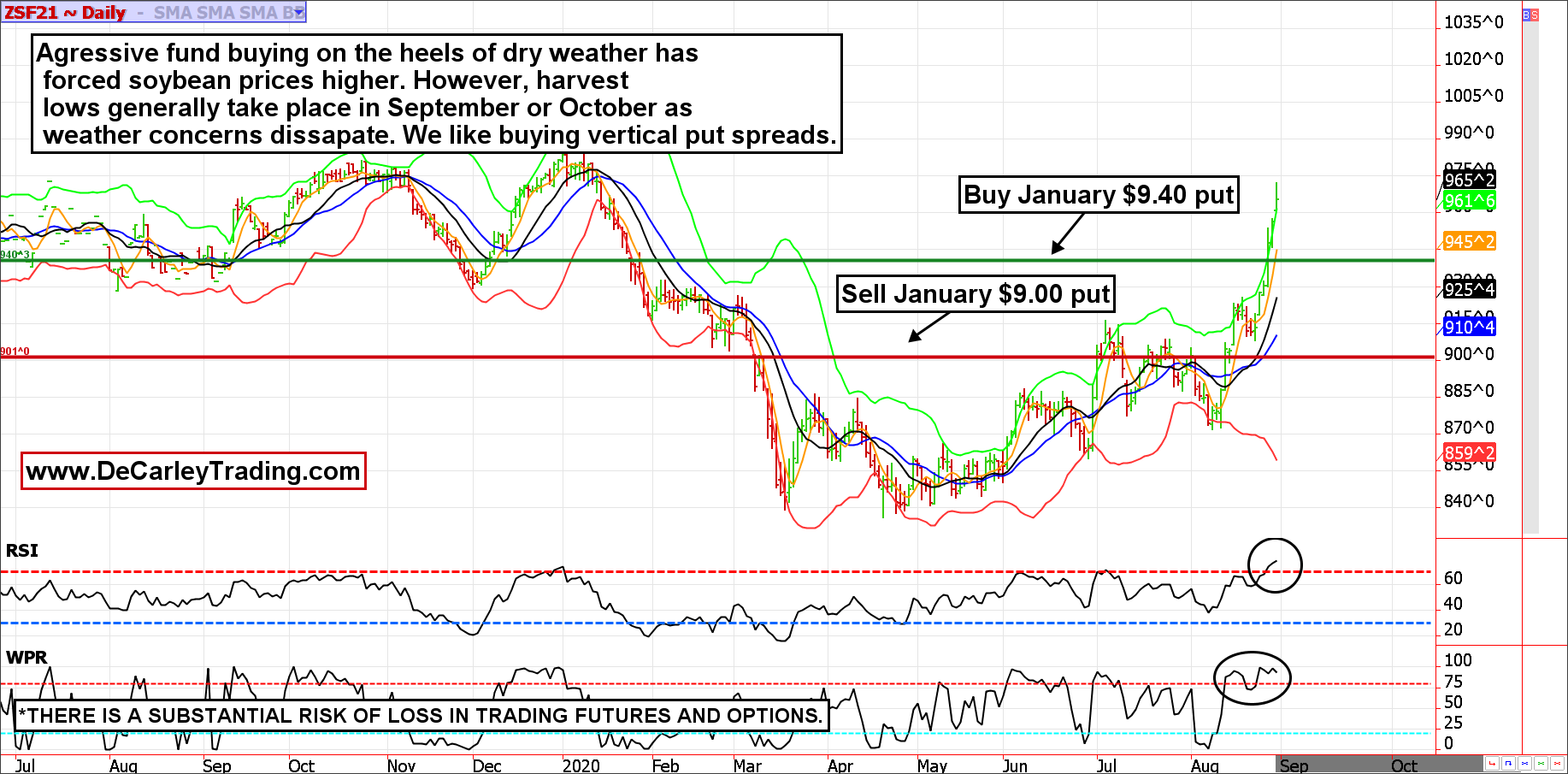We wouldn't want to be short soybean futures because we are old enough to remember how beans can move in a bull market. However, we doubt this is a bull market...instead, it is probably just an overblown weather scare that will soon fade as we move past the September contract first notice day and rainfall normalizes.
To minimize the peril of premium erosion, we like the idea of using the January options, which give the trade 115 days to work. However, if we are right about the selling, it will occur in the coming weeks not months, so we would not expect to hold this trade to expiration. The spread that seems to make the most sense is the purchase of a January $9.40 put and the sale of a $9.00 put. The total cost and risk will be roughly 14 cents or $700 plus transaction costs (because there are two legs to the spread, there are two sets of commissions and fees).

The maximum profit potential is $1,300 (which equates to the difference between the strike prices minus the premium paid to enter the spread) but would require the trade to be held to expiration to achieve. As mentioned, this trading idea is not intended to be held to expiration, which makes the desired profit significantly less.
Because the risk is limited to hold this spread, the margin is technically zero, but it should be noted that brokerages will often show a margin charge in the amount of premium paid on account statements. Further, the delta on this trading idea is slightly less than 20%. This means if the January soybean futures contract drops by 10 cents this spread will benefit roughly 2 cents. Thus, this is far from a get-rich-quick play but bearish seasonal tendencies, an overstretched market, and low-risk make it a relatively comfortable speculation.
Carley Garner is the Senior Strategist for DeCarley Trading, a division of Zaner. She authors widely distributed e-newsletters; for your free subscription visit www.DeCarleyTrading.com. She has written four books, the latest is titled Higher Probability Commodity Trading.


















